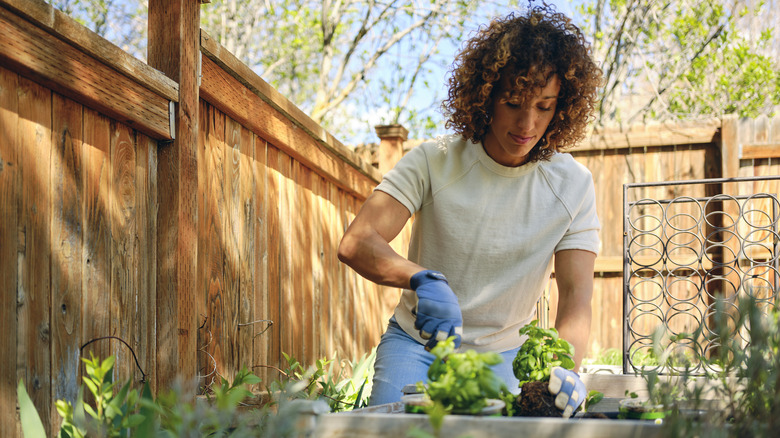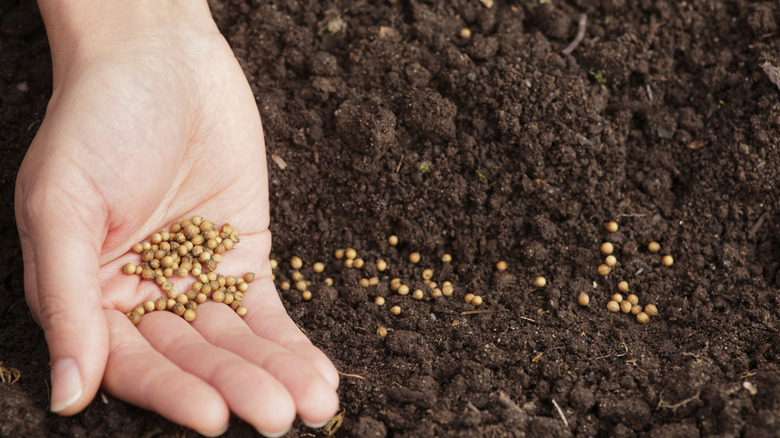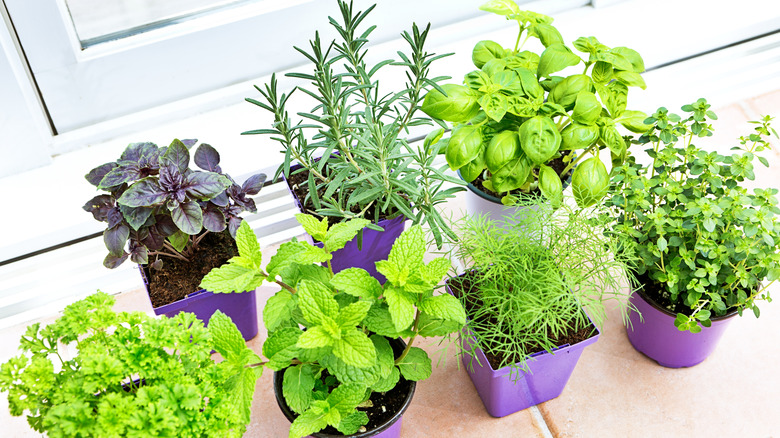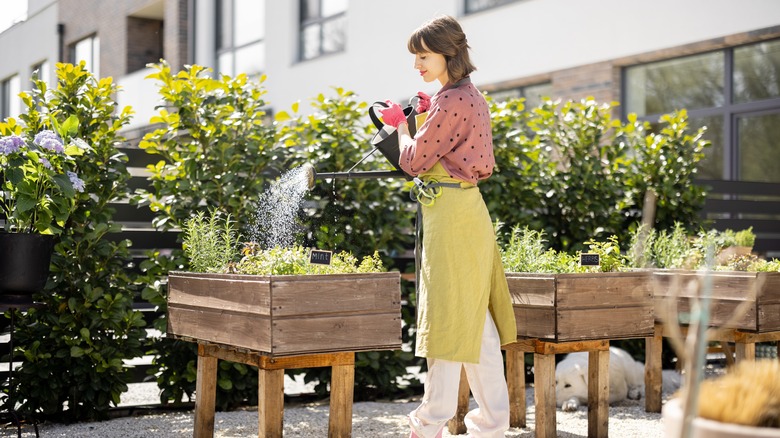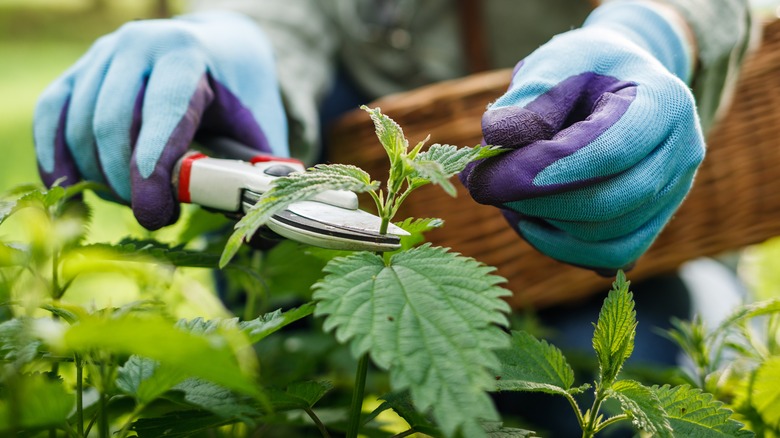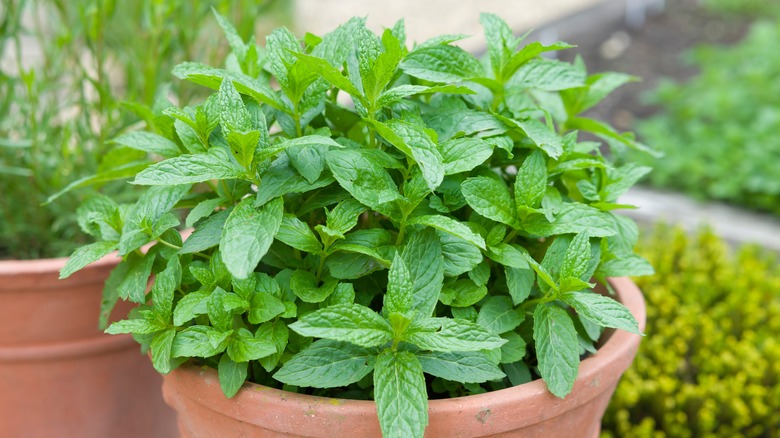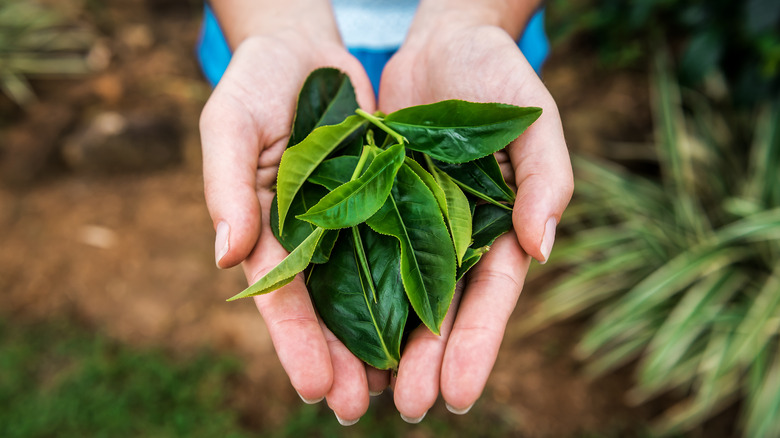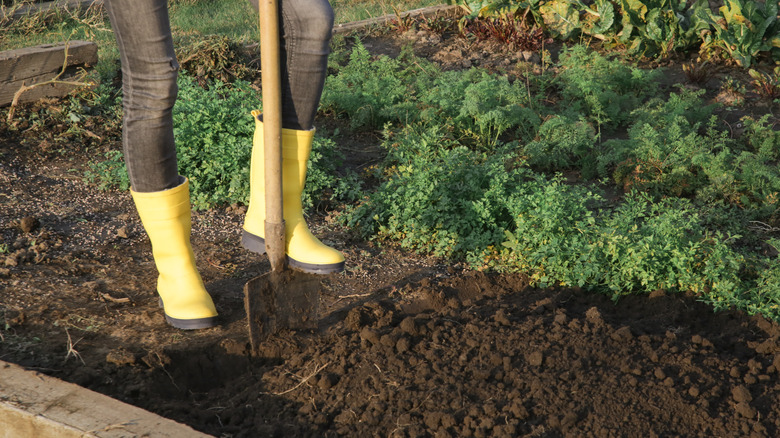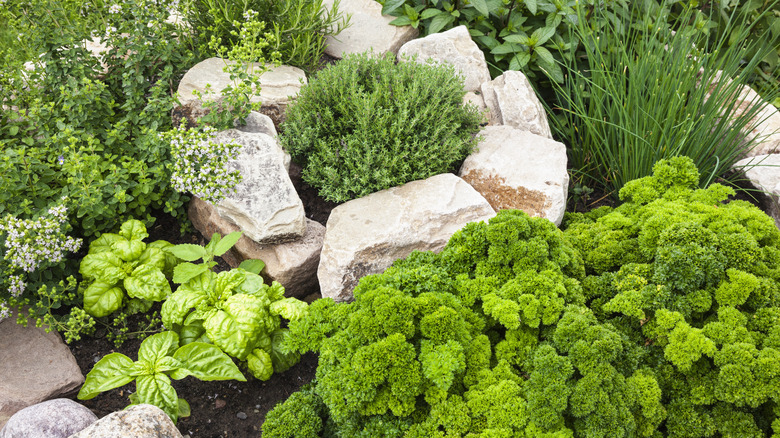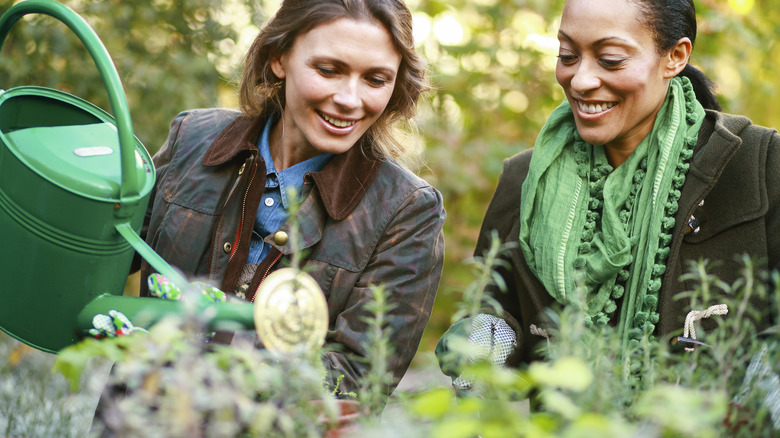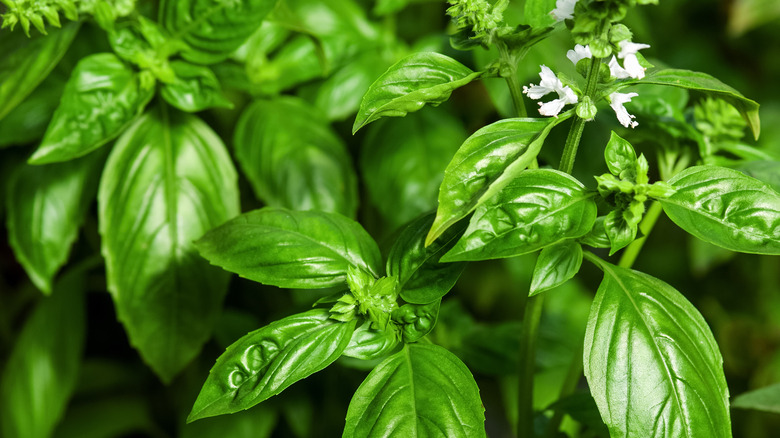The Biggest Mistakes People Make When Growing Herbs
Humans and herbs have a long and colorful history. We've been growing, cultivating, and experimenting with these dynamic and extremely beneficial plants for over 60,000 years. Before modern medicine became a thing, we used them to remedy all sorts of illnesses and they've been adding a bit of dash, flash, and razzmatazz to our dishes for generations. Herbs are a gift from Mother Nature to us all and growing them has never been more popular. However, there are a few easily avoidable pitfalls the first-time herb gardener needs to be wary of.
Herbs are easy to grow and our the perfect plant for people with no experience of gardening to get their teeth, or fork, stuck into. Herbs can make an eye-catching dynamic to any garden, but because they also thrive in a pot, you do not need a huge outdoor space to go herbal! They're great for our pollinating friends, smell divine, and who doesn't want to use some of their own homegrown fresh herbs when cooking up a storm? Our accumulated knowledge of herbs has come through centuries of trial and error, and if you're thinking of growing herbs for the first time, you are in a privileged position. Yet, before you get your hands dirty in the pursuit of growing your own rosemary, thyme, sage, or more, here are the biggest mistakes to avoid.
Thinking it all starts with a seed
The mightiest oak may have come from the smallest acorn, but when it comes to growing herbs, there's a big difference between seeds and starter plants. One is relatively easy to grow and the other is something of an uphill challenge. Admittedly, there's nothing more satisfying than planting a tiny seed and providing it with the right conditions and nourishment until it becomes a thing of beauty and a joy to behold. Unfortunately, even with the best intentions, not every Jack or Jill gets their beanstalk, and growing herbs from seeds can be a notoriously tricky prospect. You'll need an indoor environment and possibly grow lights for germinating the seeds before it's time to plant outdoors. Depending on the herb, each seed will have an optimal time for sowing and rigorous attention must be paid to soil and watering conditions if they're to flourish.
Buying a transplant may be a bit more costly, but if you want a no-fuss, all-bases-covered method of growing herbs, then opt for a ready-to-plant seedling. It's the convenient and wiser option for first-time herb gardeners, and planting them couldn't be easier. Dig a hole that's no deeper but twice as wide as the nursery pot in which the herb arrives. Slide the transplant out of the pot, loosen its roots, and place it in the freshly dug hole. Cover it very lightly with soil, water the roots, and your choice of herb will soon pay you back tenfold!
Growing the wrong variety
With over 600 types of mint and upwards of 50 varieties of basil, it's essential to do your homework and know what you're growing when it comes to herbs. Corn mint, catmint, spearmint, peppermint, apple mint, curly mint, and licorice mint all come under the herbal mint umbrella. To make matters more complicated, all the different strains of basil also belong to the mint family, as does rosemary, English thyme, culinary sage, Spanish lavender, and a host of others. Officially known as the Lamiaceae family, herbs in this clan are usually from warm and dry climates. Their cooler cousins such as dill, fennel, and parsley, are all part of the carrot, or to give it its more pompous title, the Apiaceae family. These herbs prefer more moist and colder conditions.
If you're growing a herb for its specific properties and flavors, ensure you know exactly what's in the pot when you buy it. There's nothing worse than adding the wrong herb to a dish and ruining it completely! Before culinary disaster strikes and you become the dinner party host or hostess the whole neighborhood strives to avoid, know the exact nature of what you're sowing and growing in the soil.
Jumping the gun
In the first flush of herbal enthusiasm, many people get carried away and attempt to grow herbs that may be household names, but are exquisitely painful for a beginner to grow. Although lavender may smell like the perfume of angels, you'll have a devil of a time trying to grow it. It's the hardest herb to keep alive, with rosemary, basil, and coriander also being close contenders. Herbs purchased with the best intentions from garden centers or supermarkets often wilt and die weeks later. Their needs can be too complex for the optimistic, yet naive, soul making their first forays into herbalism.
With any new endeavor, it's always tempting to jump the gun and go for broke, and growing herbs is no different. Make things easy on yourself and begin your journey with herbs that pretty much grow themselves. Mint, for example, will spread rapidly with little attention in moist soil. Thyme is a born survivor, and as long it is placed in an area with lots of light, it can handle drought and being beaten up and battered quite badly. Chives aren't afraid of the cold, and sage doesn't need any TLC to thrive (just well-drained soil). Oregano is equally at home in the garden or a container, and is a fine friend to the herbal beginner. View growing herbs like playing the guitar. Start with the cowboy chords and then progress to the barre ones, once you've mastered the basics.
Not being able to cut it
A lot of beginners make the mistake of allowing their herb to grow and grow and neglect to prune them, which is essential for their overall health. The leafy herbs such as mint, basil, oregano, chives, and tarragon all need regular pruning if you're to keep enjoying their aromatic and flavorsome bounty. Pruning improves the plant's air circulation and gives them a longer life. When the herbs are young, nipping any new growth at the top of the plant between your finger and thumb will help them in the long run and create a bushier and healthier plant, as opposed to a leggy or spindly one.
The more woody and evergreen herbs, such as sage, rosemary, and thyme, only need pruning once a year, ideally in the spring or fall. If you overdo it in the cutting department, you're at risk of killing them. Pruning more than 1/3 of the herb's growth is always a bad idea. Stop pruning at least two months before the cold weather sets in because any new growth will be tender and at risk of ground frost. Your industrial-strength garden clippers can be put aside in favor of your fingers when it comes to pruning most herbs. Bear in mind never to rip or tear at the stems if you want to avoid disease setting in.
Forgetting the pot
When planted in the garden, some herbs, such as mint, can be aggressively invasive and completely take over. Before you know it, your quaint little garden has turned into a dense and unforgiving jungle as some herbs have a habit of spreading like wildfire. Poor quality soil, shortage of space, a lack of a yard, or a wish to extend the growing season, may just be some of the reasons why you've opted to grow your herbs in a pot. Rest assured, there is nothing wrong with growing herbs in containers, particularly if you're a beginner. Sunlight, water, and nutritional soil are the key ingredients needed for quality herb growth and little else. Plus, herbs in containers are easier to maintain than in an actual herb garden.
Containers can be made from plastic, wood, metal, or terracotta, but always ensure there is adequate drainage. Choose an appropriate size pot for the herb, because you'll want plenty of space for the plant as it grows. Line the bottom of the pot with small rocks or gravel to help drainage and cover it with some high-grade potting soil. You'll probably need to water your potted plants more than those planted in your garden, because they tend to dry out quicker. Herbs in pots can easily be transported inside during the winter months to boost their longevity. If you cannot stand the sight of vegetation in containers, try planting the planters in the earth and everyone wins.
Not harvesting the herb properly
Most people don't grow herbs purely for the pleasure of watching them grow. It's their flavor and smells that make them attractive. Herbs accentuate flavors and can liven up the most mundane food with nature's elusive and magical sparkle. However, to get the bounty of the herb to the dish requires a little harvesting and it's something many beginners fall foul of. The first rule of a successful harvest is to always take a little and not a lot. Harvest no more than 1/3 of the plant mass or you'll risk killing the herb. Never attempt to take leaves or cut the stem of a young plant that is still establishing roots.
Harvesting the biggest leaves that lie at the bottom of the plant is a textbook mistake because they act as both its base and engine. Remove them and you're denying the herb the solar panel needed to channel the sun's energy throughout the rest of the plant and create all the wholesome flavor. Harvest only the small and delicious leaves that lie at the top of the herb if you want it to remain the gift that keeps on giving. When you remove the lower leaves, the plant remains skinny and weak looking, as opposed to vibrant and bushy. Always harvest above a V, so new leaves will replace the ones you take.
Failing to ensure the soil is up to scratch
Just as any building is only as strong as its foundation, a plant lives or dies by the quality of the soil it is placed in. Soil that is old and lacking in nutrients is not conducive to good herb growth, so prepare yours properly before creating a garden. Spring is the time for planting, but always ensure the soil has dried out from the rain and snowfall of winter before you work it. Turning the soil when it's still wet can cause it to compact, which will make it harder for the air to circulate and the roots of your herb to establish themselves. Tilling the soil also allows for greater water penetration. To test the soil, grab a ball of it in your hand and squeeze. If the soil simply flattens or falls apart into a few solid chunks, it's still too wet to work. If it separates into tiny pieces, it's time to grab your shovel.
A little organic compost mixed in with the soil can work wonders. The nutrients in the compost will feed the soil and it can help improve water retention and drainage. Always use your own compost if possible, but there is plenty of bagged high-quality and organic compost available in stores. Mulching can help keep the moisture in and protect the soil with its nutritional richness. Chopped straw, composted tree leaves, and bark chips all make for quality mulch.
Keeping the herb isolated
Many beginners make the mistake of purely focusing on one herb and forgetting that variety is the spice of life. Herbs flourish in company, so introduce a variety of species to your garden and create a herbal family that grows and goes together. Things may have been going spectacularly well with all that mint you are growing, and your lamb chops may well be the talk of the neighborhood; however, don't rest on your laurels — invite a little basil, rosemary, and thyme to the dinner party and show your guests just how green your fingers are.
Herbs don't take up a lot of space. You can plant them in the corner of raised beds, in pots, or around larger plants and they'll be happy with whatever area they're given. Not only will your garden begin to smell like a culinary wonderland, but all that variety will help create a life-enhancing ecosystem. The more herbs you grow, the more knowledgeable you will become about each one's unique properties, attributes, and needs. More importantly, you'll have an abundant choice of flavorings and seasoning to add to your dishes. And as anyone who's ever used herbs from their garden knows, they pack a much more powerful punch to your palette than the shop-purchased variety.
Failing to get the watering routine right
Sunlight and water are the building blocks of life and your plants need both in the right amounts to survive and thrive. Depending on the herb and where they are located, you'll need the right watering regime. Overwatering or underwatering their herbs is something many beginners struggle with, but it's not complicated if you follow a few simple guidelines. As a rule of thumb, it's best to water potted herbs every two to three days. However, common sense should be your guide, and if the soil feels damp, it means it still has enough moisture. If the leaves are wilting and the soil is dry to the touch, a little water will be just the tonic. Overwatering is a common mistake, so go easy with your herb's liquid intake.
For herbs planted outdoors, things are a little different. The climate and the season will dictate your routine, but during the hot summer months, regular and adequate watering is key. It's always wise to water first thing in the morning and allow enough time for the water to penetrate the soil. The heat from the midday or early afternoon sun will cause the water to evaporate before it can trickle down and nourish the roots. All herbs are different, so know the watering requirements for each variety. Mint, basil, and lemon balm thrive in damp soil, and lavender and rosemary cope better in dry and hot conditions.
Letting the flowers flourish
A herb in full flower may look like the very embodiment of rude health and trimming such fancy and fine foliage might feel like a sin against nature herself, but it's necessary to avoid the premature demise of your herb. Flowers may look transcendental, but they have a nasty habit of sapping the herb's vitality, aroma, and flavor. If your reason for cultivating a herb garden is a culinary one, it's important to nip those flowers in the bud before they cause some serious damage. Flowers can make your basil turn bitter, your rosemary rank, and your thyme quite torrid. The flavor and potency of a herb are at their peak just before they flower. Although you can still eat them, their leaf production has begun to wane and the herbs will be a little more coarse and a little less savory than before the flowers bloomed.
Herbs only flower in the first place because it's built into their DNA. The flowers contain seeds that carry the genetic material needed to produce more herbs. The seeds are scattered by the wind or carried by insects and dropped in places where the plant's offspring can continue the cycle of life. There's a poetry to the process, but if you want your herb to keep on giving, trim the flowers. Better yet, cut the stalk a few inches from the top before it becomes hearty enough to grow any flower buds. That way, the herb will grow new leaves before the flowers rear their head.
